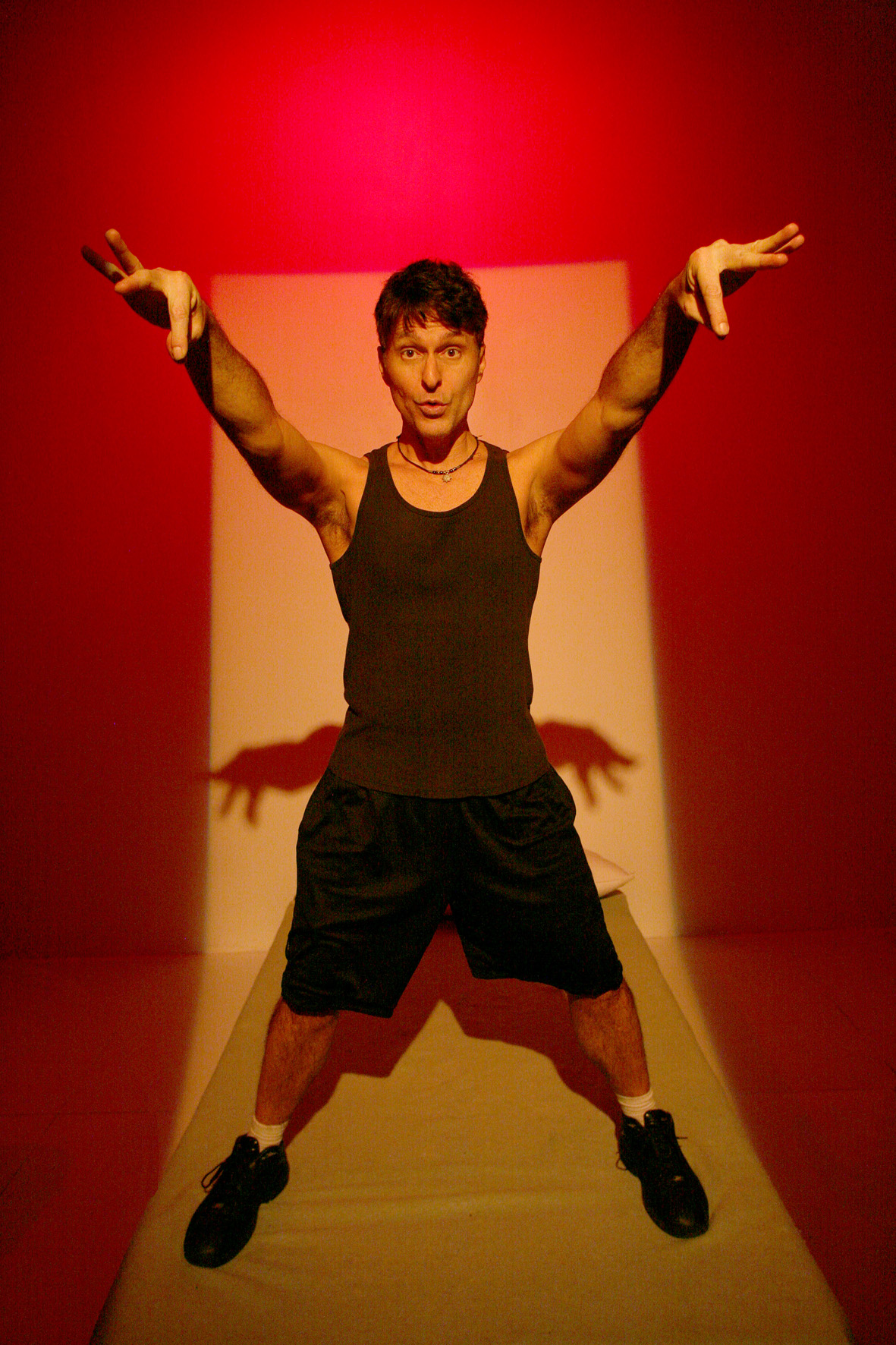In 1984, performance artist Tim Miller hiked up the hills above Los Angeles to the Hollywood sign, reached for a handhold in the wooden letter “O” and bravely ascended the precarious structure. In this risky act, Miller imagined what a queer-centric, social justice-focused performance space could like, and he wondered whether the space of the “Wooden O”—as Shakespeare refers to the Globe Theatre in Henry V, could be enlivened to confront the most pressing issues of our time.
Now, nearly 40 years later, Miller explores this question in his performance A BODY IN THE O, which follows a queer boy’s coming-of-age journey and imagines possibilities for performance art that can provoke lasting change in an unjust world. Miller, an internationally acclaimed solo performer, will be performing A BODY IN THE O on Oct. 2 at 6:30 p.m. in the lecture hall of the John Seigenthaler Center. The performance is a part of Miller’s residency at the Curb Center, during which he will engage with Vanderbilt students and faculty around the themes present in his work.

Miller has a noteworthy history of activism and protest. In 1990, he was one of the NEA Four, a group of four performance artists who received grants from the National Endowment for the Arts under a peer-reviewed process, only to have the grants vetoed due to subject matter—in Miller’s case, his engagement with issues surrounding LGBTQIA+ rights and marriage equality. Miller, along with fellow artists Karen Finley, John Fleck and Holly Hughes—each of whom created artwork with themes of gender inequality, trauma and sexual abuse—sued the NEA in federal court, where the trial judge ruled in their favor. However, after a series of appeals, the case was brought before the Supreme Court, which ruled that revoking the funding did not interfere with the artists’ First Amendment rights. The NEA subsequently stopped funding individual artists and instead funded arts organizations. The case continues to raise provocative questions about censorship and the arts.
In addition to his performance on Oct. 2, Miller will be interacting with a number of Vanderbilt classes and student groups, including the Curb Scholars—undergraduates from a range of schools and majors who are united by their pursuits in the arts across multiple media. This year, the Curb Scholars are exploring the theme of “art as protest,” making Miller’s work a timely fit for discussion and engagement. Miller will prompt the scholars, along with students from Sources of Contemporary Art, a course taught by Curb Center Faculty Fellow Jana Harper, to consider how they might use performance to confront the social issues most important to them. Miller will also visit Jack Crawford’s first-year writing seminar in the History of Art, Art and Controversy, as well as Writing for the Stage and Screen, taught by Krista Knight, writer-in-residence in Cinema and Media Arts and Theatre.
The performance is free and open to the public. Please contact Rachel Thompson, program manager at the Curb Center, with any questions.
